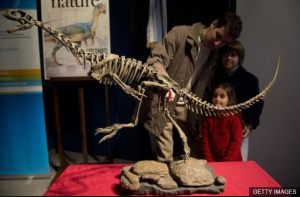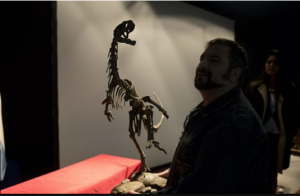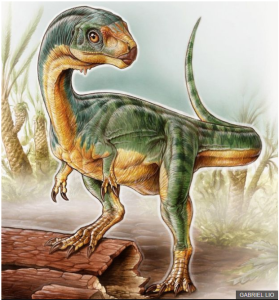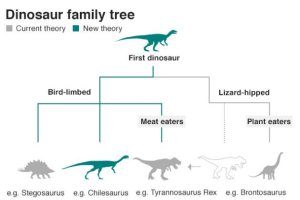-
Frankenstein dinosaur’ mystery solved
According to the BBC Company reported, about the ‘Frankenstein dinosaur’ mystery questions have solved. Sc Dinosaur always follow your dinosaur events with you.
The report of the relevant pictures as follows:
1.About the size of a large dog: Chilesaurus was unearthed in South America
2.Cambridge University’s Matt Baron tells Today that the new dinosaur fills a family tree gap
3.Chilesaurus lived at the end of the Jurassic Period, approximately 145 million years ago
The Frankenstein dinosaur, more properly called Chilesaurus, puzzled experts when it was first discovered two years ago.
It had the legs of an animal like a Brontosaurus, the hips of a Stegosaurus, and the arms and body of an animal like Tyrannosaurus rex. Scientists simply did not know where it fitted in the dino family tree.
In the currently accepted family tree, the ornithischian group was always thought to be completely unrelated to all of the other dinosaurs.
Palaeontologists regarded these creatures as an odd-ball group. But a reassessment by Mr Baron published in March in the journal Nature indicated that ornithischians were more closely related to the meat-eaters, such as T-rex, than previously thought.
And it is in re-configuring the dinosaur family tree that Mr Baron transforms the Frankenstein dinosaur from an enigma into a missing link.
“Now that we think ornithischians and meat-eating dinosaurs such as Tyrannosaurus are related, Chilesaurus slots exactly in between the two groups. It is a perfect half-and-half mix. So, suddenly in the new tree it makes a whole lot of sense.”
The alternative version of the dinosaur family tree, now called the “Baron tree”, is more than just a rearrangement, however.
It sheds new light on how different groups of dinosaurs split from one another and evolved along different paths, adds co-author Prof Paul Barrett from London’s Natural History Museum.
“Chilesaurus is there at the beginning of one of these big splits and hopefully by understanding more about its biology it will tell us what the driving factors might have been.”
Prof Sarah Gabbott said:”This is because Chilesaurus preserves an unusual suite of characteristics that are a mix between between the ornithischians and theropods. In particular, its melange of features helps to reveal the sequence of events during the critical early stages of ornithischian evolution.”
If you enjoyed this article please consider sharing it!








